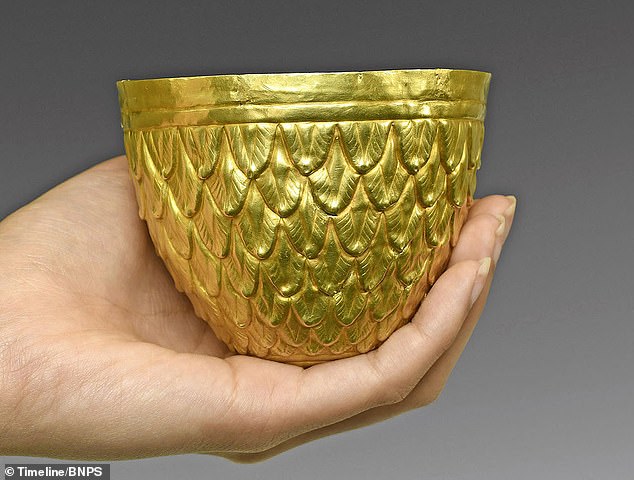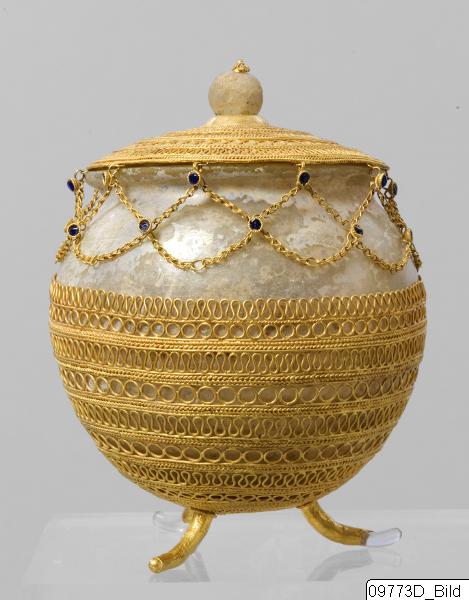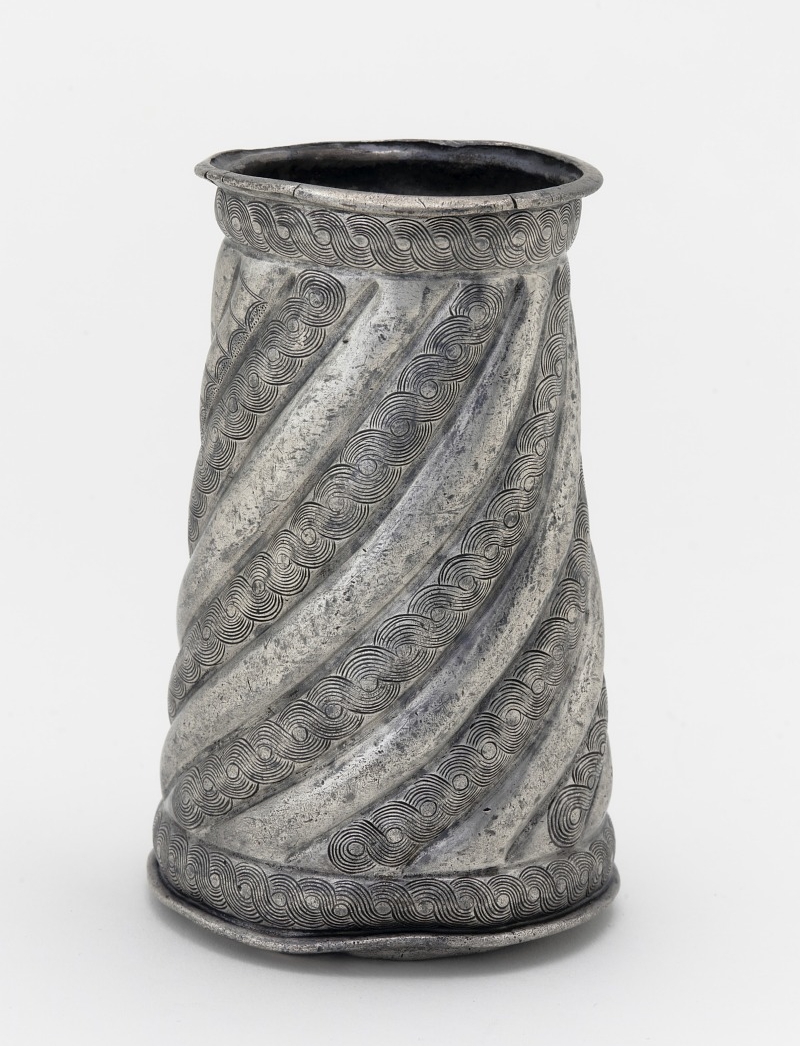593–568 BCE, Nubia, Nuri, Pyramid 8
Aspelta ruled over the Nubian Kingdom of Kush (modern day Sudan) from the capital city of Napata. His tomb in Nuri contained a group of vessels among them the most interesting is an alabastron decorated with gilded silver ornament.

https://collections.mfa.org
neck of vase of silver overlaid with gold decoration and with woven gold wire pendants bearing carnelian, magnetite, and amazonite drops
“Short, hanging, loop-in-loop chains are also exceedingly common ornaments or pendants on Hellenistic jewelry.
The alabastron shape enjoyed wide popularity soon after it was developed in Egypt. It was readily copied both by the Greeks in the north and the Kushites in the south and was adapted to their individual tastes. The same may also be said about the use of chains as a pendant ornament. Since Aspelta’s vessel was produced four centuries before the chieftain was buried with his, it cannot be determined whether we see here a uniquely Nubian invention that inspired imitations farther north and in the Mediterranean world or whether it was merely a Nubian copy of a fashionable international-style object that had per haps been inspired by an Egyptian or Greek original. Contact between the Greek world and Nubia already existed in the seventh century B.C.” Susanne Gänsicke [1994]


- Gilded silver from ancient Nubia, Susanne Gänsicke [2000] https://www.academia.edu
- King Aspelta’s Vessel Hoard from Nuri in the Sudan, Susanne Gänsicke [1994] https://www.academia.edu
or http://www.gizapyramids.org/static/pdf%20library/bmfa_pdfs/jmfa06_1994_14to40.pdf - https://www.academia.edu/40438878/The_Napatan_Cylindrical_Sheaths_A_catalogue_and_analysis_of_precious_objects_from_the_royal_cemetery_of_Nuri












